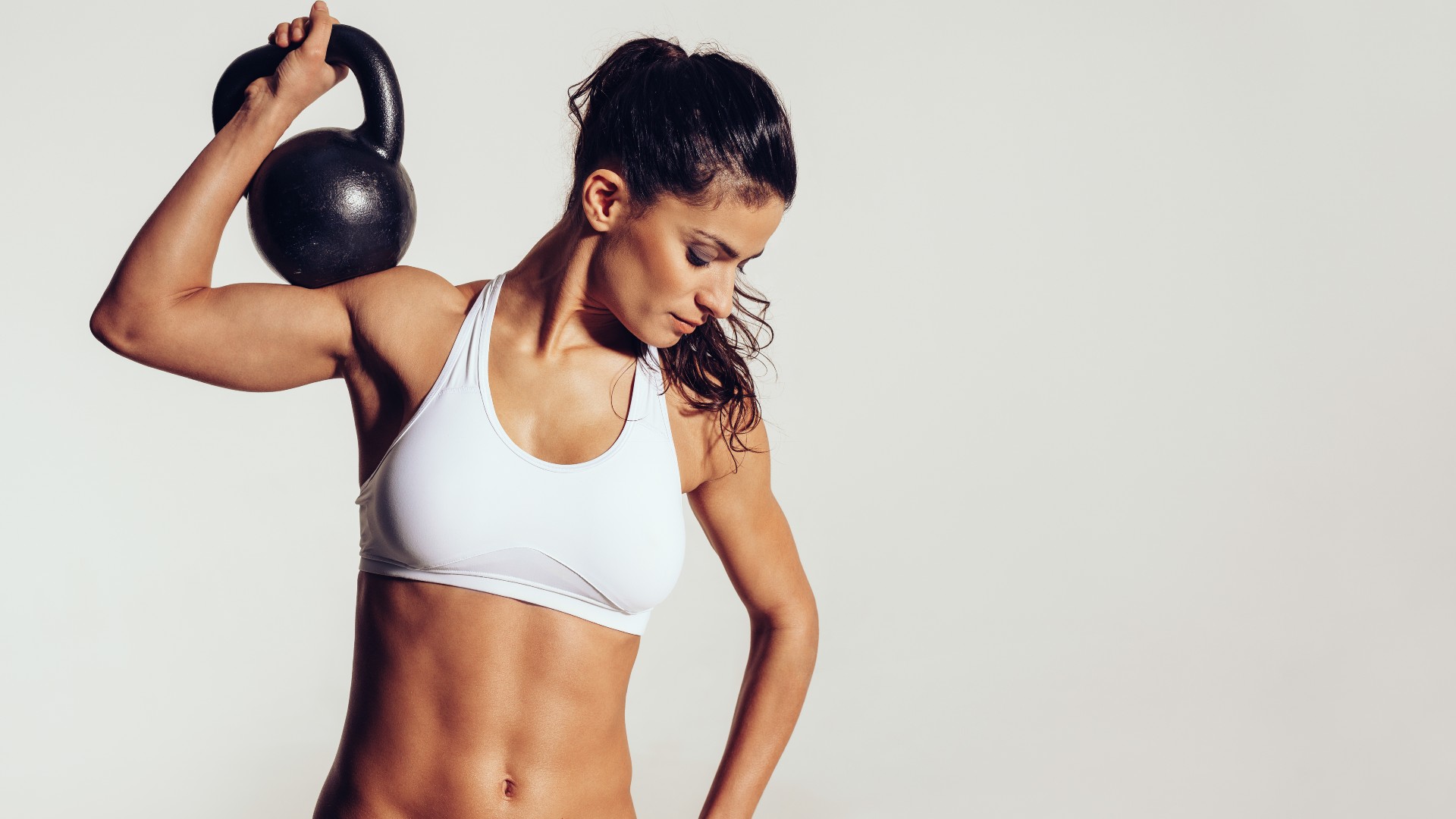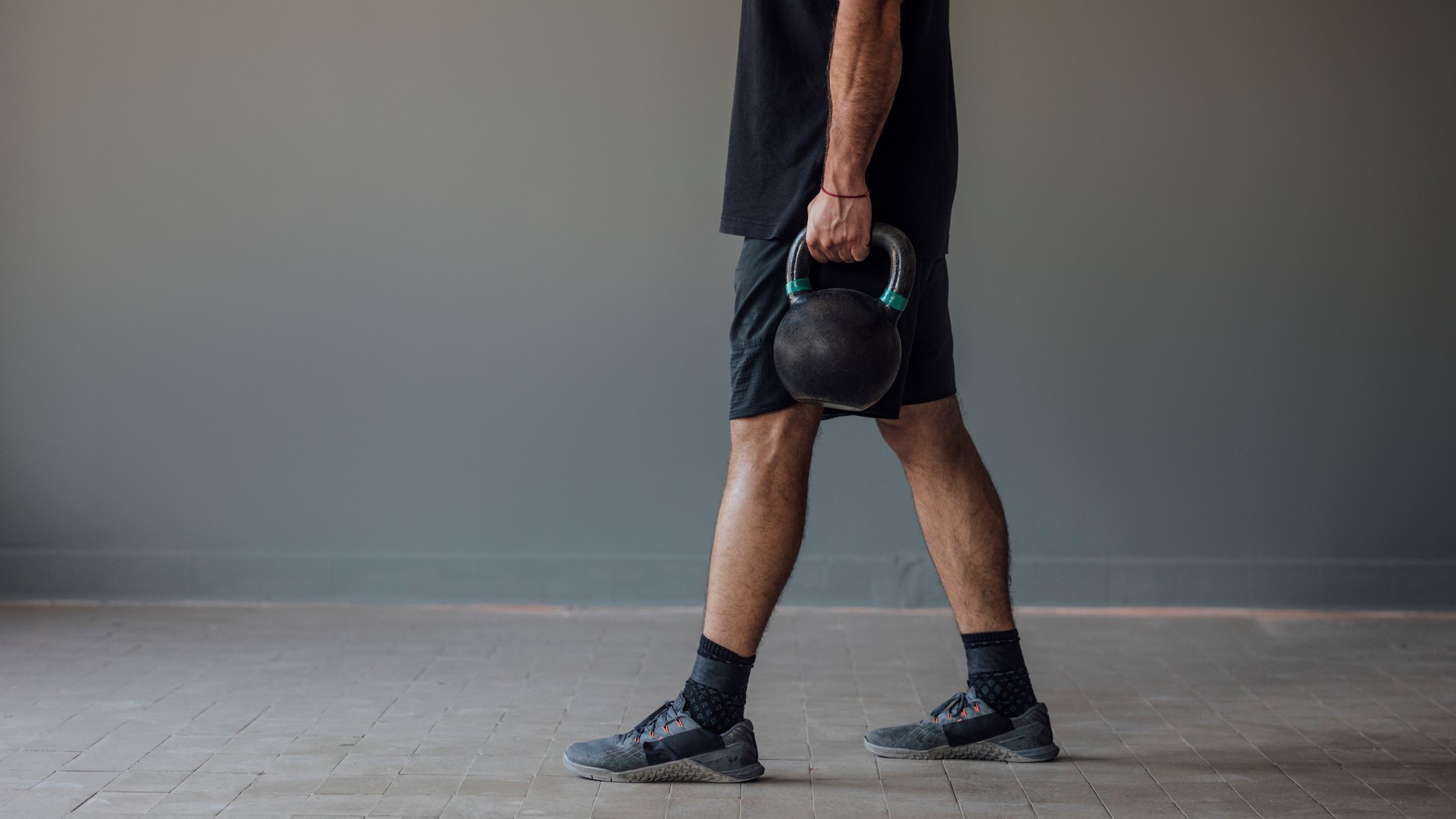
This is one of those exercises that is exactly what it sounds like — if you’ve ever grabbed your suitcase and power walked to catch a plane, train, or bus, you’ve done the suitcase carry. The good news is practicing the exercise in the gym has loads of benefits, without the stress of nearly missing your departure. Ready to find out more? Grab a kettlebell or one of the best adjustable dumbbells, and give this a go. Plus, find out what happened when I did the suitcase carry exercise every day for a week.
The suitcase carry is a versatile exercise that works your upper body, lower body, and midsection. It’s a compound exercise used in functional training workouts like CrossFit and Hyrox, and it can help you build muscle, improve your grip strength, and develop lower body power. Like a farmer’s walk, where you hold a weight on both sides, the suitcase carry is considered an isometric and isotonic exercise; isometric refers to a static exercise that places your muscles under stress without the muscle lengthening or shortening (in this case, your shoulder and core muscles), whereas isotonic includes dynamic movement like walking. If you’re a beginner, the suitcase carry can help you work on your technique, before your progress to a farmer’s walk.
As a reminder, what works for me might not be right for you and your body. If you’re new to exercise, or returning to exercise following an injury, it’s a good idea to have a personal trainer check your form before you add weight to the exercise.
How to do a suitcase carry

Unpack that suitcase, grab a kettlebell, dumbbell, or weight of some kind, and give this a go:
- Pick up the weight in your non-dominant hand. Stand with your feet shoulder-width apart, and engage your core.
- Think about pulling your shoulder blade down and back as you step forward, and walk carrying the weight in one hand.
- Continue for a certain number of steps or distance, then stop, and lower the weight back down to the ground.
- Pick the weight up on the other side and repeat.
If this is too challenging, reduce the amount of weight you are lifting, or shorten the distance you are moving for the suitcase carry.
I did the suitcase carry every day for a week — here’s what happened to my body
I noticed I had a weaker side
Like many people, I always tend to carry a suitcase, handbag, or even my 11-month-old nephew, on my dominant, right-hand side. I even hold the dog’s lead in my right hand when I’m out on a walk. On day one of doing the suitcase carry, I realized how much weaker the left-hand side of my body was, pretty much immediately. One of the benefits of the suitcase carry is that it unilaterally trains the body, working one side at a time. Over time, a weakness on one side of the body can lead to a muscle imbalance and injury, so this was a real eye-opener to keep working on my left-hand side in the gym.
I had to think about keeping my core engaged
This exercise gives you a lot of bang for your buck and also works your core as well as your upper and lower body. I really had to think about keeping my core engaged as I walked, to prevent myself from leaning slightly to the side carrying the weight. Think about sucking your belly button into your spine, and keeping your torso upright as you walk.
You also want to make sure you’re not hinging at the waist and leaning forward as you walk — this can happen when you get tired, and I noticed by my final reps on my weaker side, I tended to slouch. Not only does this reduce the effectiveness of the exercise, it puts your lower back under pressure, and can cause back pain.
My shoulder kept creeping up
My mantra for this week-long challenge was ‘shoulders down and back’! As I got tired as I walked, I noticed I would tense my shoulder, resulting in it rising up towards my ear. A personal trainer watching me mid-week told me to think about dropping my shoulder down and back towards the weight in my hand to avoid putting pressure on my shoulder and neck.
I did the suitcase carry every day for a week — here’s my verdict
We do an awful lot of these challenges on the Tom’s Guide fitness desk, but this one was a real eye-opener that I need to work on my weaker side, and my grip strength in the gym. It was a challenge, but by the end of the week, I definitely felt like I’d made progress, and managed to increase the weight of the kettlebell I was carrying. What are you waiting for? Give this one a go on your next strength session.







